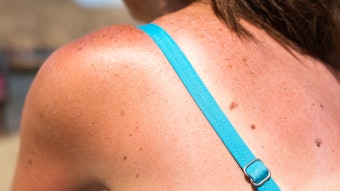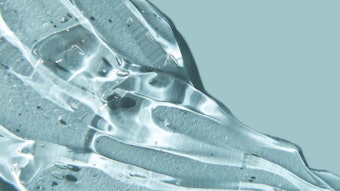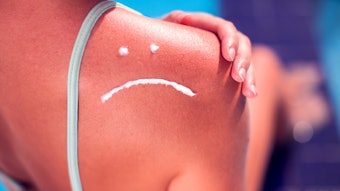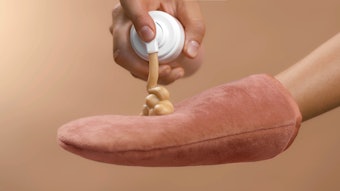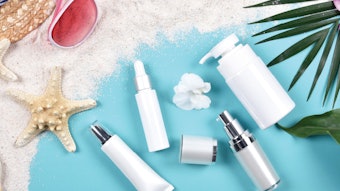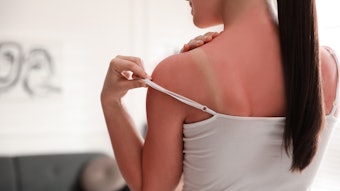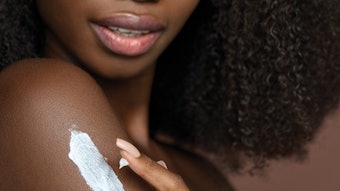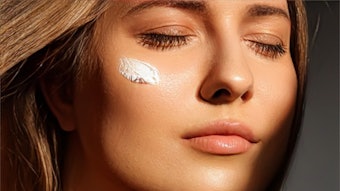
The world of sunscreens has changed quite a bit since 1989, when this article was first published. This update will discuss five big changes to U.S. sunscreen regulation and some recent information about the sun’s damaging rays.
UPDATE 1. The Threat of UVA
UVA’s effects on the skin were still controversial in 1989. I always maintained that this ray was as damaging if not more so than UVB, but back then almost all the research was devoted to UVB. This was due to the fact that sunscreens only protected from this primary burning ray.
Now, UVA is recognized as a primary contributor to an aging dermis and malignant melanoma. The melanoma connection is one reason why sunscreens are now allowed to claim UVA protection, which is identified as broad-spectrum protection on labels. Until 2012, broad-spectrum had no regulatory meaning, even though some brands used the phrase. Even though the U.S. Food and Drug Administration suggested a UVA-protection identification system years ago, there is still no way to tell how much UVA is absorbed just by looking at the label. Sun Protection Factor (SPF) remains the only rating for a sunscreen, and it only identifies how much UVB is screened, not UVA. So, even though a product can claim UVA protection, consumers still don’t know how much UVA is absorbed. To be on the safer side, suggest SPFs in the 30 to 50 range. These higher SPF values screen some ultraviolet in the lower UVA spectrum, so the higher the SPF (up to SPF 50) the more likely the product protects from some, though probably not all, UVA.
UPDATE 2. Sunscreen Won’t Prevent Additional Burning
Redness is not a sign to reapply sunscreen, but rather a sign to get out of the sun. When dealing with reapplication, the closest the FDA gets in its requirement for label directions is, “reapply every two hours,” in addition to reapplying after swimming or sweating. Instead of the current FDA direction, it should read, “Reapply every two hours if skin is not red. If it is, get out of the sun!”
Why be so picky? Since sunscreens don’t completely block the sun, a little UV always gets through. With skin is already burned, this small amount continues to add to the burn. To visualize this, imagine filling a glass with water until it starts to overflow. Once the water reaches the top of the glass, every drop that’s added causes water to spill over the sides. Applying more sunscreen over a burn won’t provide additional protection once the burn has begun. So tell your clients, “Once your skin is burned, get out of the sun!” because the label doesn’t.
UPDATE 3. No Such Thing As Sunblock

Once upon a time, products identified as sunblocks were defined by the FDA as those with a minimum of SPF12 provided by unmicronized titanium dioxid. In 1999, the FDA decided sunblock was not an honest way to describe a sunscreen to consumers since no sunscreen completely blocks UV rays.
An SPF 15 protects against 93% of UV rays, SPF 30 protects against 97%, SPF 50 wards off 98%, SPF 98 about 99%, and these percentages only apply if you rub on the same amount of sunscreen that was used in the test to determine SPF. If not, then your clients can be looking at less protection, sometimes by more than half the SPF rating.
Even a brief online search yielded an incorrect use of the terms, “sunblocks are formulated to shield against UVB rays while sunscreens protect against UVA.” No wonder consumers are confused. So get rid of the word sunblock unless you’re saying, “there’s no such thing as sunblock.” Sunblock is a false and misleading claim that causes a product to be misbranded according to the FDA.
UPDATE 4. Beyond the UV Spectrum
Although UVA and UVB are the most studied forms of sunlight when it comes to skin, they make up only seven percent of the total sunlight reaching earth. Due to their high energy, they’ve been viewed for decades as the most biologically disruptive. Scientists looking outside the UV spectrum have now identified infrared, the sun’s heat ray, as a major player in skin’s aging processes, as well as high energy visible (HEV) light.
HEV, also called near-UVA (nUVA), is the high frequency blue/violet light located immediately above UVA wavelengths. This is the part of sunlight that makes the sky look blue. It is only in the last several years that researchers have confirmed HEV’s skin-damaging effects, which include weakened barrier function, depressed immunity and suppressed healing, uneven pigmentation, inflammation and redness, increased senescent cells, wrinkles, skin sagging, and photo-interactions with certain medications. To make matters worse, HEV isn’t restricted to sunlight. You’ll find it in: the blue light emitted by computer monitors, flat screen TVs, mobile phones and tablets; energy-efficient cool white, fluorescent and full-spectrum lights; and reflective surfaces like concrete, glass, water and sand. It can also penetrate glass (think car, plane and office windows) just like UVA light.

Spanning across three distinct bands of light—infrared A, B and C—infrared accounts for 53% of the total rays reaching earth. While energy from the last two bands only penetrate the upper epidermis or are deflected altogether, the heat elicited by infrared is enough to literally “cook” cells and tissues, including vital collagen and elastin fibers. Infrared heat doesn’t just come from the sun, either. Hair dryers, heaters, fires, ovens, cooking ranges, halogen lights, LEDs, infrared saunas, tanning beds, heat coming through windows, matches, lighters and cigarettes themselves are all common sources of infrared.
But it is infrared A, also known as “near infrared,” that is proving to be the most damaging. Accounting for a little over 30% of the sun’s total rays, infrared A’s long waves of energy penetrate through the epidermis and dermis into the underlying subcutaneous layer of skin, all the time magnifying the biological effects of UV to add its own stamp on photoaging. Dermatology researchers at Seoul National University College of Medicine in Seoul, Korea1 have studied infrared A’s effects and found, among many other detrimental results, it turns on 250 genes while turning off 349 genes2 involved in aging, inflammation, stress and immunosuppression.
Non-micronized titanium dioxide and zinc oxide are the two FDA monograph-approved sunscreen ingredients that have been shown to screen HEV and infrared, although there are no clinical studies recognized by the FDA to show how much protection is provided when they are included in a particular product. Also, since both non-micronized versions of these two sunscreens leave the skin stark white, they’re not suitable for wearing, even under makeup. Even if they were, at this time protection from infrared or HEV is not allowed as a sunscreen claim in the U.S.
UPDATE 5. Sun Protection in Non-sunscreens
Clients may think they’re protected when they use a cosmetic product with SPF, but they’re not. This is because the amount of sunscreen required by the FDA during the SPF testing procedure is much more than most people apply in “real life.” According to an FDA insider, to get the proper amount of SPF 15 you would have to: use an entire tube of lipstick in one application, apply 7 times the amount of foundation most people wear, and apply two full fingers of moisturizer. Don’t count on your mineral makeup either. The FDA ordered SPF claims to be removed from powders in 2012.
No Final Monograph
Finally, the sunscreen monograph that regulates sunscreens under the FDA still isn’t final. So, until it is, the law requires us to honor the latest regulations published by the FDA. To read them for yourself, go to https://bit.ly/2FjX65Z.
REFERENCES
- Effects of Infrared Radiation and Heat on Human Skin Aging in vivo, Cho et al, Journal of Investigative Dermatology Symposium Proceedings (2009)
- N Shaath, Sun Protection Should Protect From IRA Damage, happi magazine (May 2012)
- oncosec.com/sunscreen-vs-sunblock-whats-the-difference/



